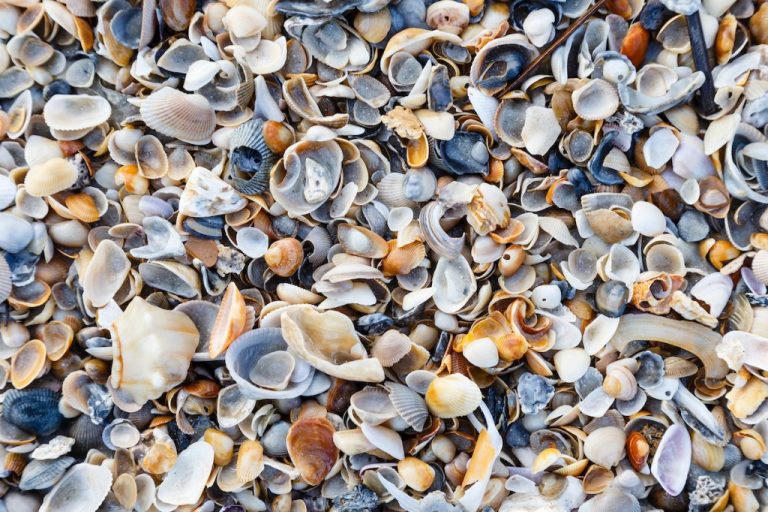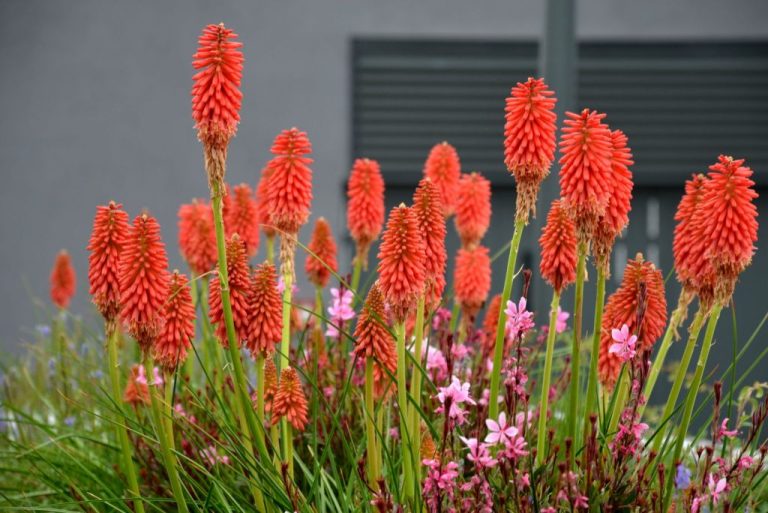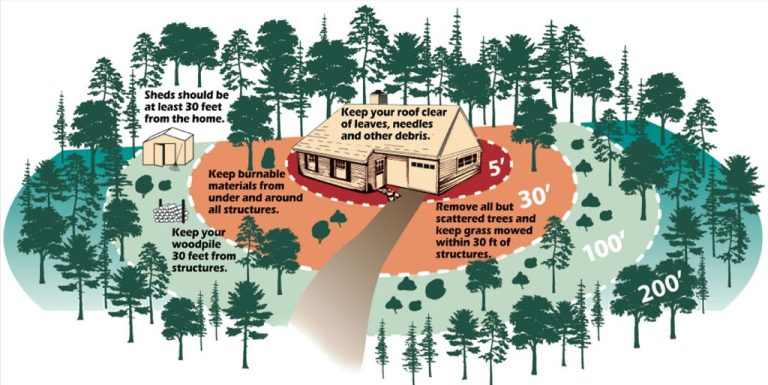Tropical Oasis Garden Design: Creating A Lush Paradise
Tropical gardens offer a chance to bring lush exotic plants, vibrant colors, and an exotic vibe into your outdoor space. By using tropical plants like palms, orchids, and vibrant flowers, you can create an oasis right in your own backyard. Tropical garden designs provide a fun way to transform a lackluster landscape into a getaway that feels worlds away.
The benefits of a tropical garden include being able to grow exotic plants not normally suited for your climate, and creating an resort-like atmosphere full of vibrant colors and textures. However, tropical gardens also come with challenges. Tropical plants often require specialized care, consistent moisture, warmer temperatures, and protection from frost and freezing. Creating the look and feel of the tropics requires planning and maintenance to help tender tropical plants thrive outside of their natural environment.
This guide will cover the fundamentals of designing a lush, paradise-like tropical garden. You’ll learn how to choose the right tropical plants, create a canopy setting, build tropical garden structures, and properly care for tender tropical plants. With the right strategies, you can craft your own exotic backyard escape.
Choosing a Tropical Theme
When designing a tropical garden, it’s important to choose a focused theme or style to create a cohesive look. Some popular tropical garden themes include:
- Jungle – Lush, vibrant plants like elephant ears, palms, and philodendrons help create a wild, untamed look. Add rope bridges, tiki statues, and even sounds like running water for an immersive rainforest vibe.
- Beach – Light, airy plants like grasses, succulents and palm trees evoke a coastal landscape. Include sand, seashells, driftwood, and outdoor showers in your design.
- Zen – Clean lines, simplicity, and serenity define a tropical Asian garden. Use bamboo, bonsai, gravel, and stone accents for a peaceful atmosphere. Focus on texture, form, and negative space.
- Modern – Concrete, steel, glass, and lighting create a sleek contemporary look. Use architectural tropicals like banana plants, spider lilies, and bird of paradise for greenery.
Deciding on a specific theme will help you select the best plants, hardscaping, and accessories for a harmonious look. Focus on just one or two main ideas to keep your tropical garden design cohesive. For a jungle-inspired courtyard, see this example: https://www.gardendesign.com/tropical/ideas.html
Best Tropical Plants
The tropical garden offers an escape to paradise, with plants in vivid shades of green, pink, orange, red and gold. Some of the most colorful, fragrant and easy-to-grow tropical plants include:
Croton (Codiaeum variegatum) – A popular indoor and outdoor plant, the croton has striking leaves that combine brilliant shades of red, orange, yellow and green (source).
Bird of Paradise (Strelitzia reginae) – Known for its distinct orange and blue flower, this tropical favorite thrives in warmth and bright light (source).
Elephant Ears (Alocasia) – Enormous heart-shaped leaves make a dramatic statement in any tropical garden. Choose from varieties like A. macrorrhizos with metallic green leaves that can grow up to 1 meter long (source).
Bromeliads – Add a pop of color with bromeliads like the bright red pineapple plant (Ananas comosus) or vivid pink earth stars (Cryptanthus). Many tolerate shade and are low maintenance.
Hibiscus (Hibiscus rosa-sinensis) – Prized for its huge, flamboyant blooms in shades of red, yellow, pink and orange. Loves heat and needs plenty of sun.
Ti plant (Cordyline fruticosa) – Adds drama with its large clusters of long, narrow leaves in burgundy or dark green hues.
For fragrance, grow gardenias, jasmine and frangipani. Other top picks include begonias, coleus, caladiums, palms and banana trees. Select varieties suited to your climate for the best results.
Creating a Tropical Canopy
One of the defining features of a tropical garden is a lush, verdant canopy. This layered effect can be created by strategically using trees, vines, ferns, and other plants that grow to varying heights. The goal is to emulate the diversity and density of plant growth found in tropical rainforests.
Tall palm trees or flowering trees like jacaranda can form the uppermost layer. Make sure to leave enough space between trees for future growth. Medium-sized trees like banana plants and tree ferns can provide the next layer down. Use vining plants like bougainvillea, passionflower, and jasmine to fill in gaps and connect the layers together. Let these vines grow along fences, arbors, or the trunks of larger trees. For the lowermost layer, incorporate bushy ferns and broadleaf plants like elephant ears. Their large leaves will create the shaded environment that many tropical plants thrive in.
When designing your canopy, consider light and shade patterns. Shade-loving plants like anthurium and calathea can be positioned under dense areas, while sun-lovers like croton and hibiscus need brighter spots. Pay attention to sun orientation and how the sunlight shifts throughout the day. The natural variation will make your tropical garden even more dynamic.

With strategic planning, these layered plantings will transform into a beautiful, enclosed-feeling tropical canopy. The goal is to make your garden feel like a secluded tropical paradise.
tropical garden canopy plants – Google Search
Tropical Garden Structures
Structures are an important design element in tropical gardens. They provide visual interest, shade, places to sit and relax, and help guide visitors through the garden. Popular structures for tropical gardens include:
Arbors and Pergolas: These overhead structures are excellent for growing vining tropical plants like bougainvillea, passionfruit, and jasmine. Wood or metal pergolas complement the tropical look. Trellises and arbors also work well to define spaces and pathways (za.pinterest.com).
Pathways: Meandering paths made of stone, gravel, wood chips, or bricks help lead visitors through the tropical garden. Curved paths feel natural. Use large plantings and borders to shape the path (za.pinterest.com).
Water Features: The sound of moving water enhances the tropical ambience. Small ponds, streams, or fountains featuring tropical plants give the feeling of an island oasis. Place seating areas nearby to enjoy the atmosphere.
Seating Areas: Wicker, teak, or iron chairs and benches placed in shady spots create comfortable places to relax amidst lush plantings. Group seats around water features or gardens.
Statues and Ornaments: Carefully chosen statues, sculptures, pots, sundials, and other accents complement the tropical plantings. Use natural, organic shapes and materials.
With the right structures, you can create an inviting tropical getaway right in your own backyard.
Caring for Tropical Plants
Tropical plants require a little extra care and attention compared to more hardy houseplants. The main aspects of caring for tropical plants include providing the right soil mix, watering frequently, supplying nutrients, and maintaining proper lighting and humidity.
Most tropical plants prefer a loose, well-draining potting mix that retains some moisture but also allows excess water to drain freely. A quality potting soil formulated for tropicals is ideal. Adding perlite, bark chips, coco coir, or sand can help improve drainage in dense or heavy soils. Allow the top inch of soil to dry out between waterings, then soak the soil thoroughly until excess drains from the pot’s bottom. Tropicals need more frequent watering than succulents or cacti.
Feed tropical plants monthly in the growing season with a balanced liquid fertilizer diluted to half-strength. This provides the nitrogen, phosphorus, and potassium tropicals need for lush foliage growth. Extended release fertilizer granules can also supply nutrients over time.
Most tropical plants prefer bright, indirect light rather than direct sunlight. East or west-facing windows are often ideal, with sheer curtains to filter the light. Rotate plants periodically so all sides receive light. Grow lights can supplement natural light in low-light conditions. Maintain warm temperatures between 70-80°F and keep tropical plants away from drafty areas.
Mist tropical plant leaves daily or use a humidifier to increase humidity around the plants. Humidity levels around 50-60% suit most tropicals best. Providing the right care helps keep tropical plants healthy and thriving indoors.
Bringing the Tropics Indoors
One of the best ways to enjoy lush tropical plants year-round is by bringing some indoors. Certain tropical plants make excellent houseplants and can add an exotic feel to any living space. Some popular choices include:
Monstera deliciosa, also known as the Swiss cheese plant, is a striking tropical with large, glossy leaves full of natural holes and splits (source). Its unique foliage makes a bold statement in any indoor space.
The bird of paradise is another excellent tropical houseplant choice. Known for its distinctive orange and blue flower, it thrives with plenty of light and moisture (source).
For lower light situations, the cast iron plant (Aspidistra elatior) is a classic option. This hardy, lush green plant handles neglect well and adds a tropical look (source).
Conservatories and greenhouses also allow you to grow tropical plants indoors. With proper temperature, humidity, and care you can create a tropical oasis beyond just houseplants. Growing tropical fruits like bananas, pineapples, or citrus trees is possible in these controlled environments.
Overwintering Tender Plants
When winter temperatures dip below freezing, tropical plants need special care and protection to survive. There are several strategies gardeners in colder climates can use to overwinter tender plants that can’t withstand frost or freezing:
Bring plants indoors before the first frost. Choose a bright, sunny window where plants will get as much natural light as possible. Supplement with grow lights if needed. Water sparingly, allowing the soil to dry out between waterings. Humidity trays or a humidifier can help counteract the dry air indoors. Monitor for pests like spider mites that may thrive in low light, dry conditions. According to Monrovia, letting plants go dormant in a cool indoor space around 40-50°F is an easy way to overwinter many flowering tropicals.
Use portable heaters, strings of outdoor lights, or other sources of heat to warm vulnerable plants on cold nights. Heated greenhouses also protect tropicals from freezing temperatures. Insulate the roots by mulching heavily around the base of the plant. Wrapping plants in burlap or fabric can shield them from winter winds.
Sink pots in the ground and mulch over the top for in-ground insulation. Dig up bulbs, tubers, and rhizomes for storage indoors in a cool, dark place until spring. According to the University of Maryland Extension, hibiscus can overwinter indoors or be allowed to go dormant until the weather warms up again.
Avoiding Common Mistakes
Growing lush, tropical plants can be rewarding but also comes with some pitfalls to avoid. Here are some expert tips and tricks for avoiding the most common mistakes:
Overwatering – Tropical plants love moisture, but they don’t like to be waterlogged. Overwatering can lead to root rot, which can kill your plants. Allow the top inch or two of soil to dry out between waterings.
Underwatering – On the flip side, tropical plants need consistent moisture. Letting the soil dry out completely can stress plants. Check soil regularly and water before it dries out completely.
Not providing humidity – Most tropical plants thrive in humid conditions. Increase humidity around plants by misting, using a humidifier or pebble trays. Low humidity causes brown leaf tips and stress.
Sunburn – Bright, direct light can scorch tender tropical plant leaves. Filter sunlight with sheer curtains or provide shade with larger plants. Move plants gradually into increased light.
Drafts – Tropical plants dislike cold drafts which can shock them. Avoid placing tropical plants near AC vents, open doors/windows.
Pay close attention to your plants’ needs, adjust care accordingly, and learn from any missteps. With some trial and error, you’ll be on your way to a thriving indoor tropical oasis. For more tips, see: 5 Common Mistakes to Avoid When Caring for Tropical Plants
Conclusion
Creating a tropical oasis in your own backyard takes research, planning, and care, but the end result is well worth the effort. By choosing the right plants, structures, and design elements you can transform any garden into a lush, vibrant paradise. The key is sticking to tropical themes and picking plants that will thrive in your climate. With the right balance of sunlight, water, and nutrients you can help even the most delicate tropical specimens flourish. Pay close attention to their care requirements and overwinter them properly to enjoy their beauty year after year. Avoid common mistakes like overcrowding and improper soil preparation. If you follow the tips outlined here your garden will soon be a tropical haven and the envy of the neighborhood.
A well-executed tropical garden provides an unforgettable experience right outside your door. As this article has shown, with careful planning and effort it’s possible to create your own exotic oasis no matter where you live. Do your research, make a plan, and get ready to immerse yourself in a tropical world of vibrant flowers, graceful palms, and lush foliage. Your backyard tropics await!






